Welcome to Terroirist Tuesday | Maconnais – Part 3: Meet the Winemakers
by: L.M. Archer, FWS
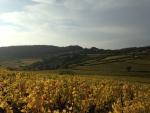
Views from Roche de Salutré in Burgundy’s Mâconnais wine region.
" data-orig-size="3264,2448" data-image-title="Roche de Salutré view of Beaujolais" data-orig-file="http://binnotes.files.wordpress.com/2013/12/img_5827.jpg" />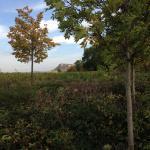
Vergisson, the other famous rock formation in Burgundy’s Mâconnais wine region.
" data-orig-size="2448,2448" data-image-title="Vergisson, Mâconnais." data-orig-file="http://binnotes.files.wordpress.com/2013/12/img_5864.jpg" class="attachment-thumbnail" height="150" width="150" aperture="aperture" />Move south from the velvet corridor of the Côte d’Or, beyond the shadow of the Côte Chalonaisse, and you find yourself flush in what some call Burgundy’s ‘most affordable’ wine region, the Mâconnais.
From Vire-Clessé in the north, to St. Véran and the more well-known Pouilly-Fuissé in the south, the Mâconnais offers Chardonnay drinkers an array of off-the-beaten-track, super-fresh, minimal-to-no-oak options.
Today binNotes introduces you to two small production domaines worth watching in the region – one located in the village of Fuissé, and the other located in a commune within St. Véran, Davayé.
First, a clarification: the French do not have a term for ‘wine-maker.’ The French are very humble about wine making – they see themselves as ‘midwives’ in the birthing of each harvest’s wine. They grow the grapes, then they vinify the grapes – with minimal intervention, allowing the wines to ‘make’ themselves.
Domaine Thibert Pere et Fils, Fuissé
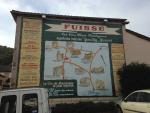
A map of the town of Fuissé, part of Pouilly Fuissé AOC in Burgundy’s Mâconnais wine region.
" data-orig-size="3264,2448" data-image-title="Map of Fuissé" data-orig-file="http://binnotes.files.wordpress.com/2013/12/img_5874.jpg" class="attachment-thumbnail" height="112" width="150" aperture="aperture" />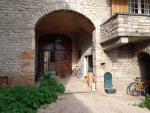
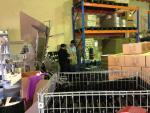
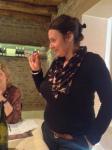
D. Thibert Pere et Fils,
Fuissé, in Burgundy’s Mâconnais wine region.
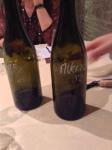
D. Thibert Pere et Fils,
Fuissé, in Burgundy’s Mâconnais wine region.
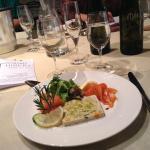
D. Thibert Pere et Fils,
Fuissé, in Burgundy’s Mâconnais wine region.
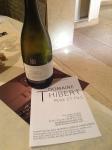
D. Thibert Pere et Fils,
Fuissé in Burgundy’s Mâconnais wine region.
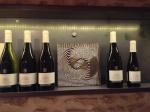
D. Thibert Pere et Fils,
Fuissé, in Burgundy’s Mâconnais wine region.
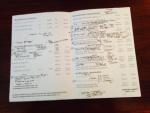
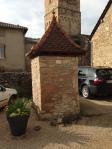
Outhouse of Domaine Thibert Pere et Fils ,
Fuissé, in Burgundy’s Mâconnais wine region.
Domaine Thibert Pere et Fils
Rue Adrien Arcelin; 71 90 Fuissé
[email protected] | www.domaine-thibert.com | US Distributor: Scott Paul Wines
A study in how to do things right, Domaine Thibert Pere et Fils owes their success to a solid foundation built by seven generations of wine makers. Domain Thibert began in 1967 with father Andrée René; in the 1990′s, son Cristophe and daughter Sandrine joined as co-managers. Some readers may recognize them from favorable reviews and ratings in prominent wine guides such as Allen Meadow’s Bourghound and the Wine Advocate. But the family remains unaffected by all the attention, dedicated to creating quality wines at affordable prices.
On the day of binNotes visit, mother and grandson were in the bottling room, while brother Cristophe rode his bike from one side of the domain to the other checking on various stages of fermentation, and father Andrée René manned the back hoe.
Dynamo co-manager and marketing maven Sadrine conducted our tasting after driving all the way from a wine expo in Brussels the previous day. Her charismatic charm showcased the wines beautifully. See more about binNotes’ lovely catered wine-tasting meal at the domaine here.
Since 2005, D. Thibert Pere et Fils has expanded their holdings and improved their infrastructure, including a state-of-the-art barrel and bottling facility, and ultra-chic tasting room for parties of up to 60 people.
The domaine employs selection massale, i.e., propagation of vines through cuttings of a vineyard’s best vines, and practices lutte raisonnee, ‘the reasoned struggle’ of farming that espouses the use of harmful chemicals.
Some of Domaine Thibert Pere et Fils holdings are among those currently under application for Premier Cru in Fuissé; these wines duly noted below.
Tasting Notes:
(2010 was very balanced, but 2009 proved a more difficult year with regard to weather and yields.)
1. Beaujolais-Villages Rose 2011 – 12% .100% Gamay old vines – Direct press; dry, watermelon, cantelope. Only 300 bottles. We were lucky enough to taste one of them.
2. Mâcon-Fuissé 2012 – regional wine. 12%. Organic – planted 2007-08. S/steel fermented, 10% neutral oak. Clean, lemon, nice structure.
3. St.-Véran, 2010-2011 – Champ Rond, Village: Lenyes. Rich, Round. Oak 80%, 20% stainless steel. + 9 mos. no filteration. White flowers, citrus.
4. St.-Véran, 2009-2010- Bois de Fée, Village: Chesales. Elegant, pure, 100% oak, more structure.
5. Pouilly-Vinzelles 2010 Les Longeays – floral, 2 hc. elegant, Future Premier Cru**. 5% new oak, SW exposure, 55 year-old vines.
6. Pouilly-Fuissé 2011-2012 Vieilles Vignes (80 year-old vines.) Selection of plots – 8% new oak ,1 yr in barrel.
7. Pouilly-Fuissé 2010 Vignes Blanches (White Stones) **Possible Premier Cru. Rents since 1995 – Cristophe Fard * needs age.
8. Pouilly-Fuissé 2009 Vignes de la Côte. Selection of vines. Minerality, white floral nose.
9) Crémant de Bourgogne Rosé 2011 – Macon 80% chardonnay, 20% gamay
Domaine de la Croix Senaillet, Davayé
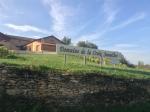
Entrance to Le Domaine de la Croix Senaillet, organic domaine in Burgundy’s Mâconnais wine region.
" data-orig-size="2592,1936" data-image-title="Entrance, Le Domaine de la Croix Senaillet" data-orig-file="http://binnotes.files.wordpress.com/2013/12/img_0509.jpg" mini="mini" />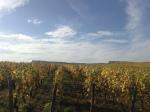
Fields of Le Domaine de la Croix Senaillet, organic domaine in Burgundy’s Mâconnais wine region.
" mini="mini" />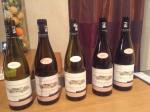
Tasting line up at Le Domaine de la Croix Senaillet, organic domaine in Burgundy’s Mâconnais wine region.
" data-orig-size="2592,1936" data-image-title="Le Domaine de la Croix Senaillet" data-orig-file="http://binnotes.files.wordpress.com/2013/12/img_0500.jpg" class="attachment-thumbnail" width="150" alt="Tasting line up at Le Domaine de la Croix Senaillet, organic domaine in Burgundy's Mâconnais wine region. | Image: L.M. Archer ©2013" data-medium-file="http://binnotes.files.wordpress.com/2013/12/img_0500.jpg?w=300" mini="mini" />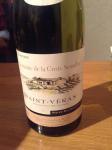
2012 Saint-Véran; Le Domaine de la Croix Senaillet, organic domaine in Burgundy’s Mâconnais wine region.
" data-orig-size="1936,2592" width="112" data-image-title="2012 Saint-Véran, Le Domaine de la Croix Senaillet" data-orig-file="http://binnotes.files.wordpress.com/2013/12/img_0496.jpg" class="attachment-thumbnail" mini="mini" />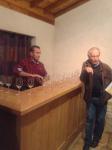
R. Martin of family-owned Le Domaine de la Croix Senaillet, organic domaine in Burgundy’s Mâconnais wine region, and BIVB Guide Jean-Pierre Renard conduct a tasting.
" data-orig-size="1936,2592" data-image-title="Richard Martin, Le Domaine de la Croix Senaillet" data-orig-file="http://binnotes.files.wordpress.com/2013/12/img_0495.jpg" class="attachment-thumbnail" width="112" alt="Richard Martin of family-owned Le Domaine de la Croix Senaillet, organic domaine in Burgundy's Mâconnais wine region, and BIVB Guide Jean-Pierre Renard conduct a tasting. | Image: L.M. Archer ©2013" data-medium-file="http://binnotes.files.wordpress.com/2013/12/img_0495.jpg?w=224" aperture="aperture" />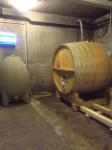
Amphore used for making Saint-Véran and fermentation barrel at Le Domaine de la Croix Senaillet
" data-orig-size="1936,2592" data-image-title="Amphore, Le Domaine de la Croix Senaillet" data-orig-file="http://binnotes.files.wordpress.com/2013/12/img_0490.jpg" class="attachment-thumbnail" width="112" alt="Amphore used for making Saint-Véran and large fermentation barrel at Le Domaine de la Croix Senaillet | Image: L.M. Archer ©2013" mini="mini" />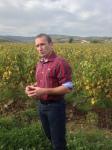
Owner R. Martin of family-owned Le Domaine de la Croix Senaillet, organic domaine in Burgundy’s Mâconnais wine region, and BIVB Guide Jean-Pierre Renard conduct a tasting. Le Domaine de la Croix Senaillet
" data-orig-size="1936,2592" data-image-title="One of brothers Martin in the fields of Le Domaine de la Croix Senaillet" data-orig-file="http://binnotes.files.wordpress.com/2013/12/img_0489.jpg" class="attachment-thumbnail" width="112" alt="Richard Martin in the vineyards at Le Domaine de la Croix Senaillet | Image: L.M. Archer ©2013" data-medium-file="http://binnotes.files.wordpress.com/2013/12/img_0489.jpg?w=224" mini="mini" />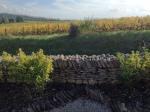
Views from Le Domaine de la Croix Senaillet, organic domaine in Burgundy’s Mâconnais wine region, towards vineyards.
" data-orig-size="2592,1936" data-image-title="View from Le Domaine de la Croix Senaillet towards vineyards." data-orig-file="http://binnotes.files.wordpress.com/2013/12/img_0529.jpg" mini="mini" />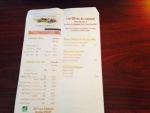
Tasting Notes from binNotes’ visit to D. d la Croix Senaillet, Davayé – Mâconnais, Burgundy FR.
" data-orig-size="320,240" data-image-title="Tasting Notes – D. de la Croix Senaillet" data-orig-file="http://binnotes.files.wordpress.com/2013/12/photo-2.jpg" class="attachment-thumbnail" width="150" aperture="aperture" />Domaine de la Croix Senaillet - 71960 Davayé, St. Véran
www.domainecroixsenaillet.com
Located in the town of Davayé, in the St. Véran appellation of southern Burgundy, Domaine de la Croux Senaillet was founded by Maurice Martin in 1969. Brothers Richard and Stéphane have run the vineyard since the early 19990′s.
A prominent stone cross stands vigil in the vineyards of Domaine de la Croix Senaillet, from which the domaine takes its name. Records show that the cross dates to 1866, and replaces one destroyed in 1793 during the French Revolution. The original cross was donated centuries ago by a former mayor named Benoit Senaillet, blessed to protect villagers and passers-by.
On the day binNotes visited, brother Richard showed us around the pristine facility, replete with concrete amphole and oversized wooden fermentation barrel, then out to the fields for a first-hand look at one of the region’s few certified bio-dynamic vineyards. Meanwhile, brother Stéphane tooled around in the vineyard on what looked to be a manual harvester, though it was late October.
Bio-dynamic wine growing requires a huge investment in time and money. Because no chemicals or pesticides are employed, vines must be sprayed with natural organic materials, then re-applied after each rain, since the organic compounds don’t ‘stick’ to the plants or soil. However, D. de la Croix Senaillet feels the quality, flavor and freshness of the wines increase, as does the long-term health of the vineyards, so remain committed to the practice.
Interestingly, unlike the United States, the bio-dynamic wines offered during our tasting did not reflect a significant price point increase.
Tasting Notes:
The full spectrum of these wines poured out refreshing and vibrant on the palate.
1. Macon-Davayé 2012: 5 plots. Yellow apple notes, citrus nose, acid +.
2. Saint Véran 2010: Fleur blanche aroma, clean, citrus notes, acid +, long finish. Stainless steel fermented.
3. St. Véran – Les Rochat 2010 – Citrus, primarily lemon, acid +.
4. St. Véran les Buis 2012 – Herbacious notes, acid +.
5. St Véran – En Pommards 2010- White flower notes.
This concludes binNotes series on the Maconnais. Part 1 & 2 links here: Part 2 | Part 1
Have a question or comment? Please feel free to leave it below…and remember to join me for the next Terroirist Tuesday, when binNotes mixes things up a bit with a ‘mystery’ topic… Cheers!
Thanks to:
French Wine Society
BIVB - Brigit Houdeline, Director & Jean-Pierre Renard, Wine Guide.
Domaine Pere et Fils – Sandrine et famille
Domaine de la Croix Senellait – Richard et Stéphane Martin
Follow binNotes: | Facebook | Twitter | Pinterest
Copyrighted 2012-2014. All Rights Reserved. All images courtesy the author.
Filed under: Beaujolais, Burgundy, Burgundy, France, France, French Wine, French Wineries, Wine Tasting Tagged: Burgundy, Domaine De La Croix Senaillet, Domaine Thibert, maconnais, wine

